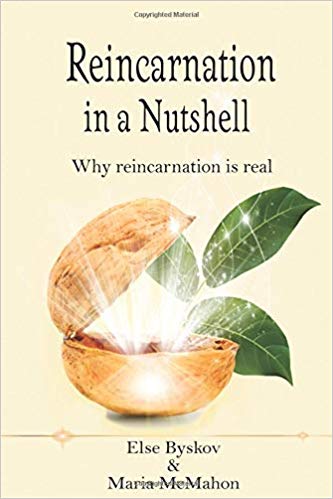Today almost 80% of all dead bodies are cremated. This method of disposing of the dead body has become increasingly popular over the last few decades, probably because it seems like an easier, cheaper and quicker way to dispose of the body. There is less transportation involved and no expensive headstone is needed. All you need is an urn.
But is it really the best way to treat the body that has served us for all those years? Martinus is very clear about this, and he has written a whole book about why cremation is not recommendable. The title of the book is: ‘On Funerals’. It has not yet been translated into English, but is available in Danish, German and Spanish.
Our body is home to trillions of living beings
In the book Martinus points out that a dead body does not ´just´ consist of dead matter. In a body that is alive there are trillions of small living beings alive inside it. Our organs are living beings as are all our cells, molecules and atoms. The structure of life is living beings inside living beings, so our body is where an infinite number of small living beings have their life experience. All living beings have a consciousness and a life experience, and our body is a universe where countless small living beings experience life. Their consciousness may not be as advanced as ours, but still they are conscious, and we can thank them for the many functions they carry out inside our body – functions that we cannot do without. Our cells and organs are our loyal subjects and we should be grateful for the work they carry out for our benefit every second of the day.
It is clear that our body does not consist of dead matter and we all know this, because when we look at any cell from our body in a microscope, we can see that it moves and wriggles. It is alive.
When we pull out, our micro beings don´t die right away
When we die, this essentially just means that we pull our energy field containing our consciousness and I out of the physical body. As it is our energy field that holds the body components together, the body starts to decompose as soon as the consciousness pulls out. But even though the consciousness has pulled out, there are still trillions of small living beings alive inside the body. They will live on irrespective of the presence of the I or soul, because the main prerequisite for their life to continue is that there is liquid in the body. They will eventually die as well, but they do not die immediately, and the most loving way to treat them is to allow them to live on during their natural life span. For most cells the natural life span is 3 months, so the most loving way to treat them is to allow them to live their life to its natural end.
Cremation means a horrible death for our cells
When we allow our body to be cremated, we subject all those small living beings to a horrible death by flames. It is the most agonizing, heartless way to make them end their lives and they suffer terribly during this unnatural death. Just imagine if we took the Earth and put it in a casket and surrendered it to flames. Imagine what type of horrible death we would all have to suffer if the whole of the Earth burned. This is the type of death these small beings will be subject to when we decide to have our body cremated. It is not a kind or loving way to treat our micro-cosmos, and it reveals a total ignorance about life at micro-cosmic level.
The connection of the departing soul with its body
For that reason Martinus is strongly against cremation. He also points out that for a few days after death, the I and consciousness (or soul) still has some type of connection with the body. The physical body may be held very dear by the departing soul, because so many memories are connected with it, and now it is time to say goodbye. So, for a few days the soul will still be observant of the body and it may even feel some type of repercussion of the process of burning. With horror the departing soul will watch its dear old vehicle go up in flames. Martinus is very clear: cremation is the worst imaginable way to treat a dead body. It is subjecting trillions of living beings to a horrible death by fire. It is not a way to treat beings that are dear to us.
What to do then?
What to do then, with the dead body? Martinus recommends that the body be treated with formaldehyde to prevent the many bacteria alive in the body from attacking the living cells. Then, the body should be placed in a casket and buried, either underground or on a shelf in a cemetery above ground as they do in many southern European countries.
Cremation is very CO2 heavy
Another argument against cremation is the amount of energy it takes to burn a moist body full of liquid and life to ashes. In this day and age when a lot of attention is being paid to CO2 emissions it is clear that cremation is very CO2 heavy. That should be reason enough to avoid it. Each cremation uses about 110 litres of fuel and releases about 240 kg of carbon dioxide into the atmosphere. As an example, the roughly 1 million bodies that are cremated annually in the United States produce about 240,000 tons of carbon dioxide. That’s more CO2 pollution than 22,000 average American homes generate in a year. Burying is a much more environmentally friendly way to dispose of the body. In this way we also show kindness to another living being: The Earth.
The idea is to be kind to all living beings and treat them with respect and love… also our micro-cosmos.



 Else Byskov is an authority on the groundbreaking work of Martinus (1890-1981), the Danish philosopher, visionary and mystic.
Else Byskov is an authority on the groundbreaking work of Martinus (1890-1981), the Danish philosopher, visionary and mystic. 
This article has given me pause for thought. I understand it completely. Nonetheless, I am disturbed by it. I will be thinking more on this. I don’t equate that cells have thought, which I have assumed allows for the sensation of pain. Cells are energy as well, right? Energy doesn’t have feeling….it is a knowing, to my way of thinking. I would assume that my all-knowing soul already knows the ‘thought’ behind a decision of cremation. Anyway, this is symposium material as far as I”m concerned and I will consider it deeply. Thank you, Else.
Some of my favorite books are the “Dune” Chronicles. There is a group of women in them, the Bene Gesserit. I LOVED how they handled the departure of a sister – the body was simply wrapped in a shroud, and taken to the orchards, preferably to a spot in the orchards that was the sister’s favorite fruit or tree. There, the body was “planted” upright – and a new tree planted on top so the sister was fertilizing the new tree. It made so much sense, and was so logical. Now, I understand there are coffins similar to the containers plants come in that decompose a the plant outgrows them. I’ve never been a fan of cremation, and have made my family hyper-aware I do NOT want it. This way makes more sense to me.
Dear Else, love your books and Martinus’s teachings are a blessing to all seekers. However, as a long time Buddhist and a student of non-duality as espoused by countless Indian masters I am wondering if the Buddha who was cremated and countless spiritual sages have been cremated (the Ganges is a perpetual cremation ground) have they all missed the teaching that after death we are in effect incinerating living beings by being cremated? It is an idea I will have to sit with and dig deeply into the subject. Thanks again for all your wonderful books.